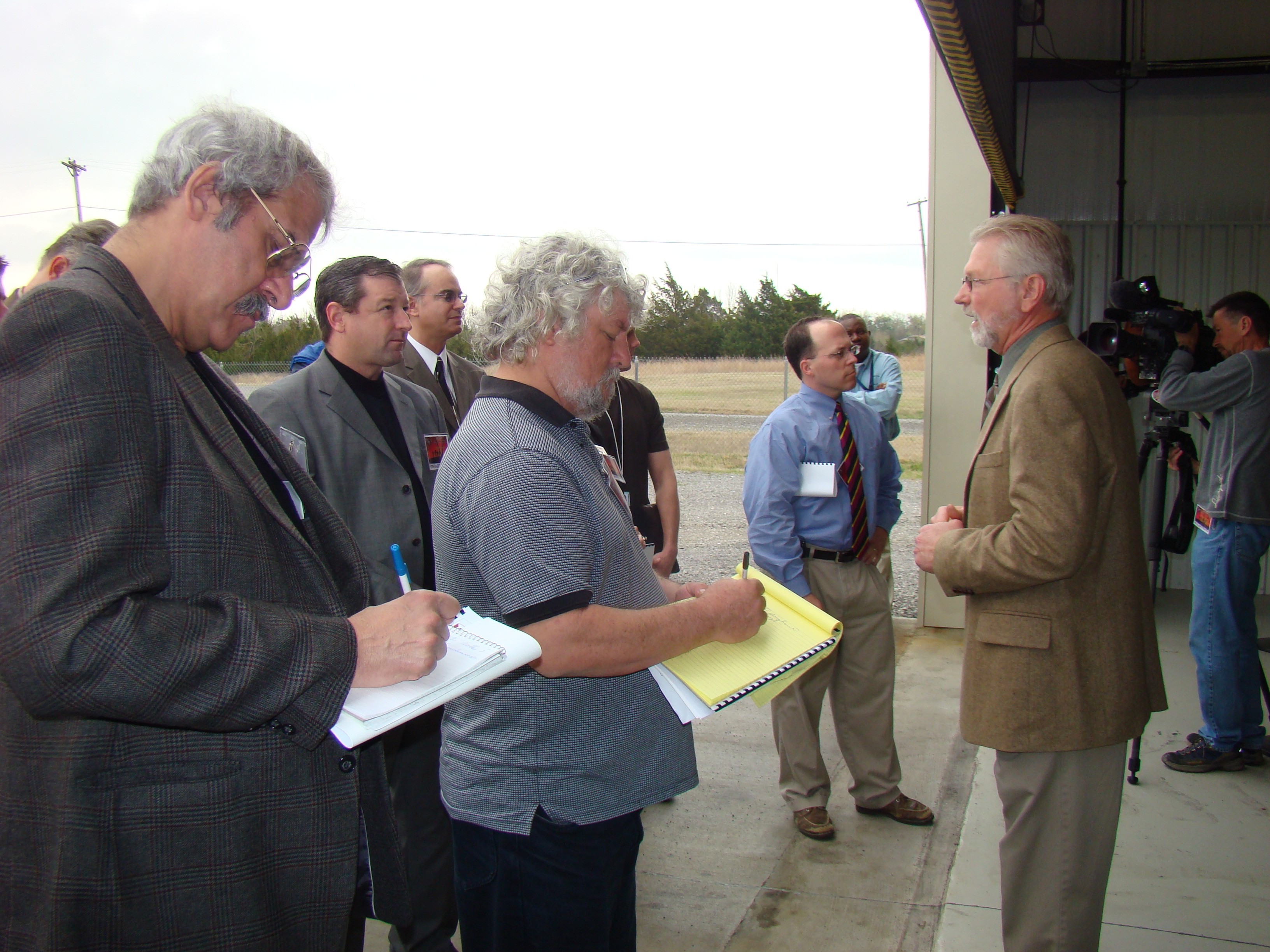The U.S. Army Defense Ammunition Center (DAC) held an Engineering Media Day on March 31 to display equipment designed and developed by DAC engineers. Local and regional media representatives attended along with federal congressional and senate representatives and McAlester Chamber of Commerce members.
Three pieces of equipment were demonstrated: Desert Optimized Equipment (DOE), Ammunition Peculiar Equipment (APE) 1996 - Automated Tactical Ammunition Classification System (ATACS), and the Ship Motion Simulator (SMS).
The DOE is a transportable workshop designed to support ammunition logistics at remote locations in harsh environments. The need was identified by returning Southwest Asia (SWA) soldiers and civilian deployees.
"The DOE was developed to provide the military (active duty, DoD civilians, or contractors) a deployable facility with controlled environment and required tools and equipment to perform munitions related tasks," said James Michaud, Quality Assurance Specialist (Ammunition Surveillance). These tasks include: quality assurance inspections on ammunition and explosives returning from a combat/training mission, cyclic munitions inspections, repackaging, and limited maintenance and reissue of inspected munitions.
The current DOE configuration features five easily deployable container systems with an internal power and air supply systems, two workshops with tools and material handling equipment, an office area, and a storage container.
"System performance characteristics were harvested from deployees and veterans from various operations in SWA. However, the DOE can be used in any habitat," said Michaud.
DOE suites are currently planned for deployment in support of Operation Enduring Freedom (OEF) and Operation Iraqi Freedom (OIF).
The next piece of demonstrated equipment was the APE 1996 ATACS, a second generation design developed by DAC engineers and Cybernet Systems Corporation.
Two first generation ATACS' are in use at Camp Arifjan, Kuwait and the National Training Center at Fort Irwin, Calif. These machines have sorted and inspected over 8 million cartridges during troop rotation turns-ins, with validated savings of $15 million dollars.
"The second generation ATACS was developed to integrate into an ISO container, for transportability into desert conditions", said Bruce Ramm, DAC equipment specialist. "This ATACS is more customer friendly because it's easier to maintain, it's quieter and less prone to environmental impacts such as heat and sand".
Remote diagnostics, analysis and troubleshooting of the APE 1996 (ATACS) has now been integrated by adding in a Very Small Aperature Terminal (VSAT)/Broad Band Global Area Network (BGAN) capability to all ATACS systems. The use of this satellite-based network communications system has greatly reduced travel costs and equipment down-time.
The third piece of equipment demonstrated was the Ship Motion Simulator (SMS). This state-of-the-art equipment is part of the validation engineering division at DAC, and is used to provide accurate and reliable test results for approval of containerized ammunition loading procedures. The SMS is a 6-axis (pitch, yaw and roll) computer controlled simulator that replaced the Shipboard Transportation Simulator that provided a 2-axis roll.
"The equipment provides the only known capability of it's kind in the United States," said Jerry Beaver, chief of the validation engineering division. "Commercial industries are inquiring about using the facility to test their equipment and products for ocean shipment stability."
"The Engineering Media Day was a huge success for DAC, allowing the opportunity to showcase how DAC provides direct support to the warfighter," said Larry Nortunen, acting associate director for engineering. "It was a prime opportunity to display the equipment and DAC capabilities before deployment." -30-


Social Sharing